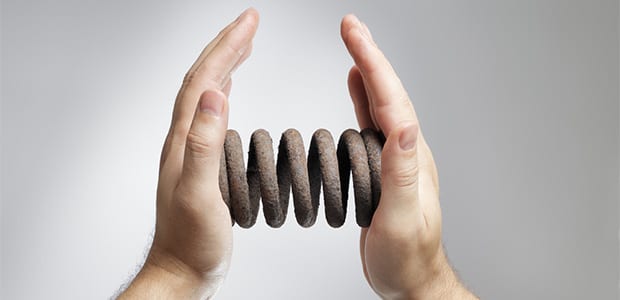COMPRESSIVE FORCES ON LOWER BODY EXTREMITIES
Types of Force on the Body
Force on the body is any influence causing the body to undergo change. Our bodies, particularly our bones, tolerate some forces better than others. This especially matters when facing heavy resistance, which magnifies the effect of a force. The 5 types of force are (RDL Fitness);
- Tension which consists of two pulling forces. This force usually occurs with the pull of a muscle on its tendons.
- Shear which consists of two equal and opposite forces acting parallel that tend to displace an object between the lines of force. Bones cannot handle shear well.
- Bending places maximum tension on the convex surface of a bent object and maximum compression on the concave surface of a bent object.
- Torsion which is a twist that affects one end with the other end fixed.
- Compression which consists of two pushing forces. It deforms an object to make it shorter along the line of force. Specific bones handle large compressive forces, with examples including the tibia of the leg and the femur of the thigh.
This Blog will specifically focus on Compression.
Compression Force Effects on the Body
Compression force (or compressive force) occurs when a physical force presses inward on an object, causing it to become compacted. This occurs throughout our daily life as we walk, run and carry heavy loads. Compressive forces are pushing down on our body, specifically on the lower part of our body where the compression is felt most (Tekscan). Compression can have negative effects on lower extremities causing bone damage, fatigued limbs and flat feet.
How to Alleviate Compression
Proper exercise technique and more important proper footwear can help alleviate and prevent injury because it allows bones to support the weight, not the less rigid muscles, tendons and ligaments around joints.
(1) Proper alignment of skeletal elements during exercise allows distribution of compressive forces to those structures that are most resistant and thus prevents orthopedic problems. If you put a barbell on someone’s shoulders, gravity is going to pull the weight toward the ground with a f force that is applied along the long axis of the body. In other words, the body is being squished between the weight and the earth. It’s a good thing for us that the body is built precisely to tolerate huge compressive forces. After all, supportive bones such as the vertebrae have similar compression resistance to oak structural beams.
Exercises with a compressive nature, when done for months to years, stimulate bones to add new mineral content, thus reinforcing the bones and making them even more resistant to fracture.

Proper exercise technique in the face of large compressive forces prevents injury because it allows bones to support the weight, not the less rigid muscles, tendons and ligaments around joints. Obviously, these latter structures contribute, but proper alignment of skeletal elements during exercise allows distribution of compressive forces to those structures that are most resistant and thus prevents orthopedic problems.
Bone-on-bone movement provides more effective force transfer as an added perk. When done progressively, exercises that possess compressive characteristics develop additional tolerance to compressive force
(2) Proper arch support in your footwear is crucial to alleviate compressive forces on lower extremities. SelectFlex® adjustable support insoles are engineered to provide dynamic support to meet the variable compressive weight load demands on the foot arch that people experience every day. It also provides selectable suspension technology to customize and dynamically correct imbalances of the foot and ankle.
The SelectFlex arch suspension system is currently marketed as the PowerLift Arch™, but the same principal applies to military use. Studies have shown that SelectFlex delivers up to 52% increased arch support to help protect feet under heavy pack weight loads which increases compressive forces.
Find out more today about SelectFlex!







